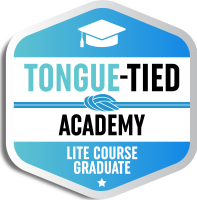FAQs about Orofacial Myofunctional Therapy
Insurance
Unfortunately, orofacial myofunctional therapy is not usually a covered service. However, you may use your HSA (Health Savings Account) or FSA (Flexible Spending Account).
General Questions
Orofacial myofunctional therapy consists of retraining the muscles of the face and mouth to assist with normal development of the facial structures and function of the mouth.
The main problems related to OMDs are changes in breathing, chewing, swallowing and speech. The proper resting position of the lips and tongue may also be affected.
The following list reflects different conditions that are referred for therapy:
- Sucking habits
- Parafunctional habits
- Mouth breathing
- Lip incompetence-the inability to close the lips without muscle strain
- Drooling
- Chapped lips
- Red swollen gums; excess plaque
- Incorrect tongue posture at rest
- Sleep-disordered breathing
- Bruxism-clenching or grinding the teeth in other than normal function
- Jaw muscle pain
- Cracking or fracturing teeth
- Tongue thrust
- Incorrect relationship between the upper and lower arches
- Malocclusion or crooked teeth
- Orthodontic/orthognathic surgical relapse
- Eating dysfunction
- Choking or aspiration
- Lazy speech muscles
Anyone or a number of specialists may recognize a problem in a child, adolescent, or adult and want the patient to go through orofacial myofunctional therapy.
Research indicates that we chew during the process of eating 1000 to 3000 times per day; therefore it is important to use the lip, tongue, and jaw muscles correctly.
Lip closure during chewing strengthens and develops the lip muscles which in turn helps establish lip closure for all the mouth functions.
Lip closure prevents ‘smacking’ or noisy eating and keeps food from spilling out or corrects the messy eater.
Lip closure while chewing limits the side-to-side movement of the jaw which is beneficial for the temporomandibular joint.
Thorough chewing dissolves substances in the food to make them more accessible to the taste buds. Chewing a semi-hard to hard diet in a child helps to develop the mandible.
Proper chewing on both sides of the mouth helps to develop the two sides of the jaw evenly, promotes equal muscle development in the temporomandibular joints, helps distribute the force used by the chewing muscles evenly between both sides, helps produce a more uniform wear pattern on the teeth and contributes to facial symmetry.
Proper tongue sweeping while chewing cleans debris to prevent premature entry of food into the throat which may cause choking.
Thorough chewing increases saliva production which helps to digest bacteria that can lead to plaque buildup, thoroughly mixes the food with saliva which is rich in digestive enzymes that begin the process of starch and fat digestion. When food is chewed thoroughly the less work there is for the stomach and intestines reducing gas and bloating. The intestines will have an easier time pulling micronutrients out of thoroughly chewed food and providing the body with more vitamins, minerals, antioxidants, and amino acids.
Chewing releases serotonin, a neurotransmitter that helps us relax, go to sleep, focus or concentrate and elevates our mood.
All speech sounds except the /th/ sounds are based in the neutral position. Speaking within the neutral position keeps the tongue from putting incorrect pressure on or between the teeth. Proper muscle tone in the tongue muscles helps the tongue to move quickly and accurately to produce various sounds. Orofacial myofunctional therapy is not a replacement for speech therapy but can be important to the progress and success of speech therapy.
The mouth is a complex organ composed of three systems: the myofunctional system, the dental system, and the medical system. There is no one specific cause for orofacial myofunctional disorders. There may be multiple contributing factors within these three systems that negatively influence how the 5 basic mouth functions will work.
OROFACIAL MYOFUNCTIONAL SYSTEM: Conditions within this system make it difficult for the orofacial muscles to function correctly.
There are different conditions that affect the function of the lips:
- Short upper lip
- Restricted maxillary frenum
- Everted lower lip
- Flaccid muscles of the lips
- Tight muscles of the chin and neck
There are different conditions that affect the function of the tongue:
- Incorrect development of the tongue muscles
- Restricted lingual frenum
- Enlarged tonsils
- Restricted palate
There are different conditions that affect the function of the jaw:
- Jaw muscle pain, injury, nerve damage, etc.
- Disc displacement
- Dental discrepancies
DENTAL SYSTEM: Conditions within this system make it difficult for the orofacial muscles to function correctly.
- Shape of the hard palate
- Relationship between the upper and lower arches
- Alignment of the teeth
- Dental appliances on the palate, on the teeth or between the teeth
MEDICAL SYSTEM: Conditions within this system make it difficult for the orofacial muscles to function correctly.
- Restricted nasal airway
- Enlarged tonsils
- Allergies, asthma, respiratory problems, etc.
- Syndromes, neurological conditions, injury, etc.
All of these systems and structures work together as a team. A dysfunction or altered functional pattern in any one of them affects the others, contributing to orofacial myofunctional disorders.
Progress with orofacial myofunctional therapy, whether the client is a child, adolescent, or an adult depends on a number of factors:
- The number of myofunctional problems that need to be corrected.
- Any medical condition/s that would compromise the goals of therapy.
- Dental conditions affecting the palate or teeth that make it difficult for the muscles to function correctly.
- Client compliance with the myofunctional therapy exercises and the daily practice to retrain the muscles to function correctly.
- Parental involvement with young patients to supervise the exercises and give guidance on proper function.
- Keeping the therapy appointments.
- The frequency of interruptions in the routine of doing the exercises or practicing the proper functions, i.e. holidays, vacation, illness, school issues, work situations, etc.
- Controlling any other habits, actions or behavior that works against the goals of therapy.
- Lip closure aids in the development of the muscles in the lower third of the face.
- Comfortable lip closure looks attractive.
- Lip closure helps keep the lips from drying out.
- Lip closure helps keep the mouth moist with saliva which has many benefits: saliva provides a defensive barrier against bacteria, fungi and viruses; it has a buffering action which protects teeth against bacteria producing acids; and there is a remineralizing benefit that helps repair the early stages of tooth decay.
- Lip closure helps eliminate or reduce bad breath.
- The lip and cheek muscles form a band that circles the teeth which determines the dimensions of the arch and establishes the position of the teeth.
- Lip closure helps to guide the anterior teeth into position and acts as a retainer to hold them in place.
- Lip closure establishes nasal breathing while awake and sleeping.
- Nasal breathing increases the lung’s ability to absorb oxygen from the inspired air.
- Diaphragmatic breathing, as part of the physiologic rest posture, pulls air into the lowest part of the lungs where oxygen exchange is most efficient.
- Diaphragmatic breathing lowers the heart rate and blood pressure, relaxes muscles, calms the mind and stops anxiety.
- Nasal breathing filters the air of debris and pathogens.
- Nasal breathing helps to shrink the nasal turbinates.
- Nasal breathing contributes to the normal development of the nasal cavity and the maxillary sinuses.
- Nasal breathing while sleeping helps reduce the dry or sore throat associated with mouth breathing.
- Nasal breathing produces a pattern of airflow which helps to suck the tongue up in the palate. The proper posture of the tongue in the palate is known as the neutral position.
- The neutral position aids in the normal development of the palate.
- The neutral position helps to support the palatal transverse arch width.
- The neutral position helps to maintain an open pharyngeal airway.
- The neutral position brings the tongue up off the floor of the mouth to facilitate free flow of the salivary glands under the tongue.
- The neutral position helps support the mandible allowing the teeth to separate in freeway space.
- The physiologic rest posture with freeway space helps to relax the masseter muscles.
- The physiologic rest posture with freeway helps keep the temporomandibular joint ‘loose packed’ to maintain the proper disc space width.
- The physiologic rest posture with freeway space stops clenching or grinding while awake or sleeping.
- The physiologic rest posture helps to maintain proper head posture.
- The physiologic rest posture is the starting point for the correct saliva swallowing.




